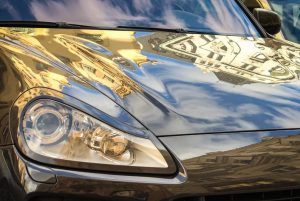Layers of Reality
 Jo Wright Whitten sees what many people overlook. Passing by a car or a structure most people are too preoccupied to view what is in front of them, so chances are they will not see the reflections in the glass made by their surroundings. Lucky for us, Jo has a keen eye that recognizes these rarely observed moments and does something about it. When she sees an interesting image, her placement is crucial; one step in any direction will change the result completely. From here, the partnership between eye and camera captures the wonder of the moment and preserves it in time. After Jo does the legwork, it is the viewers that benefit from her watchful eye; she takes the obscure and brings it into the realm of the perceivable.
Jo Wright Whitten sees what many people overlook. Passing by a car or a structure most people are too preoccupied to view what is in front of them, so chances are they will not see the reflections in the glass made by their surroundings. Lucky for us, Jo has a keen eye that recognizes these rarely observed moments and does something about it. When she sees an interesting image, her placement is crucial; one step in any direction will change the result completely. From here, the partnership between eye and camera captures the wonder of the moment and preserves it in time. After Jo does the legwork, it is the viewers that benefit from her watchful eye; she takes the obscure and brings it into the realm of the perceivable.
In Jo’s photography, distortion is the key element that brings the scene to life. In Urban Reflections III, (image) the vehicles’ curves add unexpected swirls and arches to the objects cast upon them. This gives the artwork a whimsical atmosphere where one questions, “Which way is up?!” This illusion is generated because the focus is not on the car, nor the urban landscape, but on the exciting, new plane that is created when the two are joined. The collaboration of shiny surface and mirrored subject produces another dimension, one that Alice herself could not resist entering.
The dimensional interaction in her work provides that one could view the same image on multiple occasions and each time feel as though they have seen a different picture. The eyes are tricked, and the brain is deceived because upon closer examination it is difficult to tell what is a reflection and what is not. This visual playfulness is where Jo’s printmaking background shines in this medium. Just as quickly as the multi-layer juxtapositions seem to be separate from one another, they begin to blend seamlessly into one image, creating something new.
What emerges is a surreal space that is equally as intriguing as it is beautiful. Here, in the novel, reflective domain, the harsh lines of the urban sprawl become rounded and fluid; a shift from what we have come to know of the material world. The echo of nature revealed here reminds us that in the organic world, there are no straight lines, no precise angles, only perfect chaos. This highlights that our lives are full of these apparent “contradictions.” However, even in the stark contrast between urban and rural; machine-made and natural, there is always part of one present in the other, and they are dependent on one another.
Since art is subjective, each person may see something different in Jo’s work. However, if we are open, her images teach us to take another look, be mindful of others’ perspectives, examine things closely, and maybe, change our viewpoint.
by Leilani Brothers
